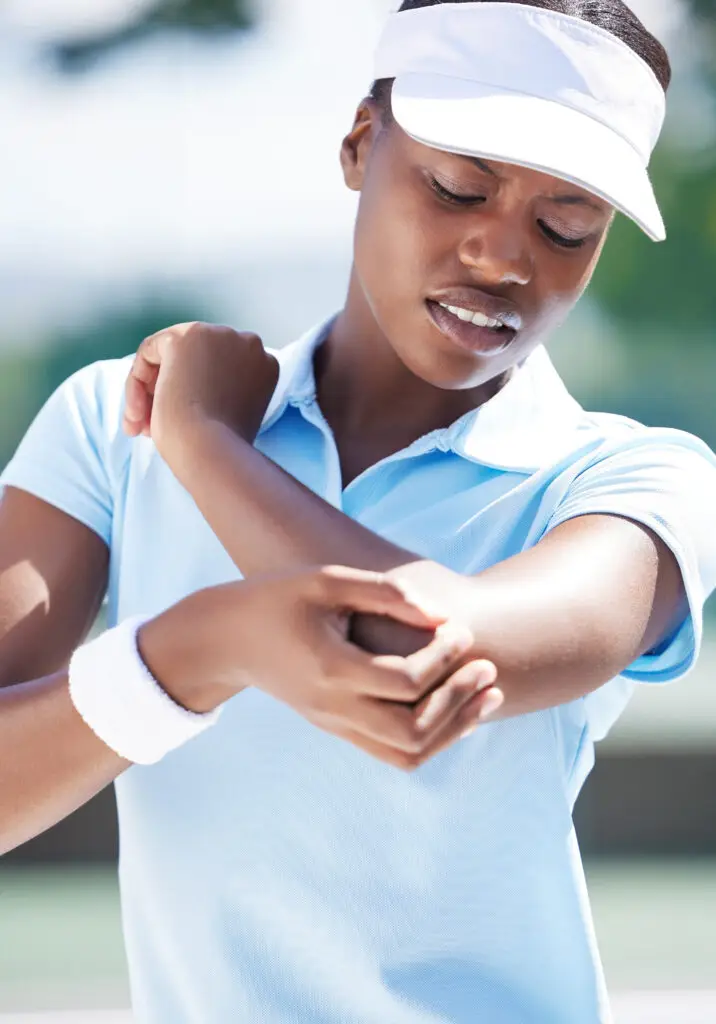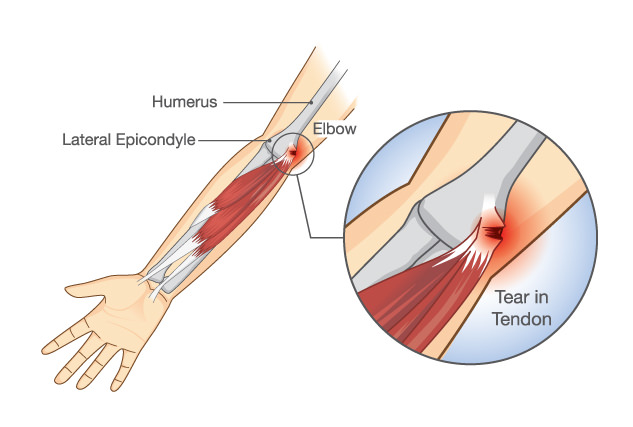Lateral epicondylitis is a tendonitis commonly known as “tennis elbow”

Although the majority of people with lateral epicondylitis have never played tennis. The condition causes pain on the outside portion of the elbow over a bony prominence named the lateral epicondyle. Pain occurs with activities such as grasping, pushing, pulling, and lifting. As the process progresses, the pain may occur with limited activities or even at rest. Of note, a separate entity termed golfers elbow, or medial epicondylitis, causes pain on the inside of the elbow.
Anatomy
The lateral epicondyle is where the Extensor Carpi Radialis Brevis (ECRB) tendon inserts. This tendon attaches to the muscle that allows your wrist and fingers to extend.
Diagnosis
The diagnosis is usually made based on the history that the patient describes to the healthcare provider, and a physical exam. There will be localized tenderness in the region of the lateral epicondyle. Pain is also often reproduced with the patient extending their wrist under resistance.
X-rays may be done to rule out other causes of elbow pain; however, these are typically normal. Very rarely are other imaging modalities, such as MRI (magnetic resonance imaging) needed.
Treatment
Nonsurgical Treatment
Nonsurgical treatment mainly focuses on addressing the symptoms, but do not resolve the cause of the pain. Rest and proper stretching is the first step, combined with anti-inflammatory medications. Stretching is focused on the wrist extensor muscles. First, the extensor muscles are stretched with the elbow held in flexion, and later with the elbow extended. Finally, strengthening exercises are performed, focused on the extensor muscles.
The ReleF procedure is the one nonsurgical treatment option that resolves the cause of the pain, rather than just treating the symptoms. This is a non-invasive radiofrequency treatment that stimulates the body’s natural healing response.
Surgical Treatment
If symptoms do not respond to nonsurgical treatment, or are severe enough, surgery may be recommended. Surgery for lateral epicondylitis is minimally invasive.








